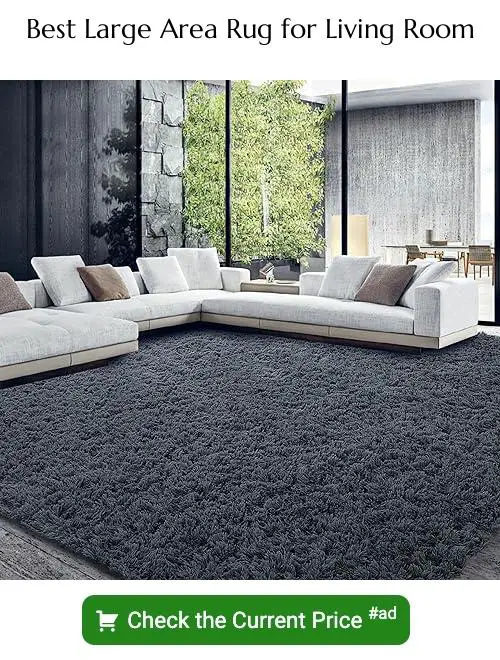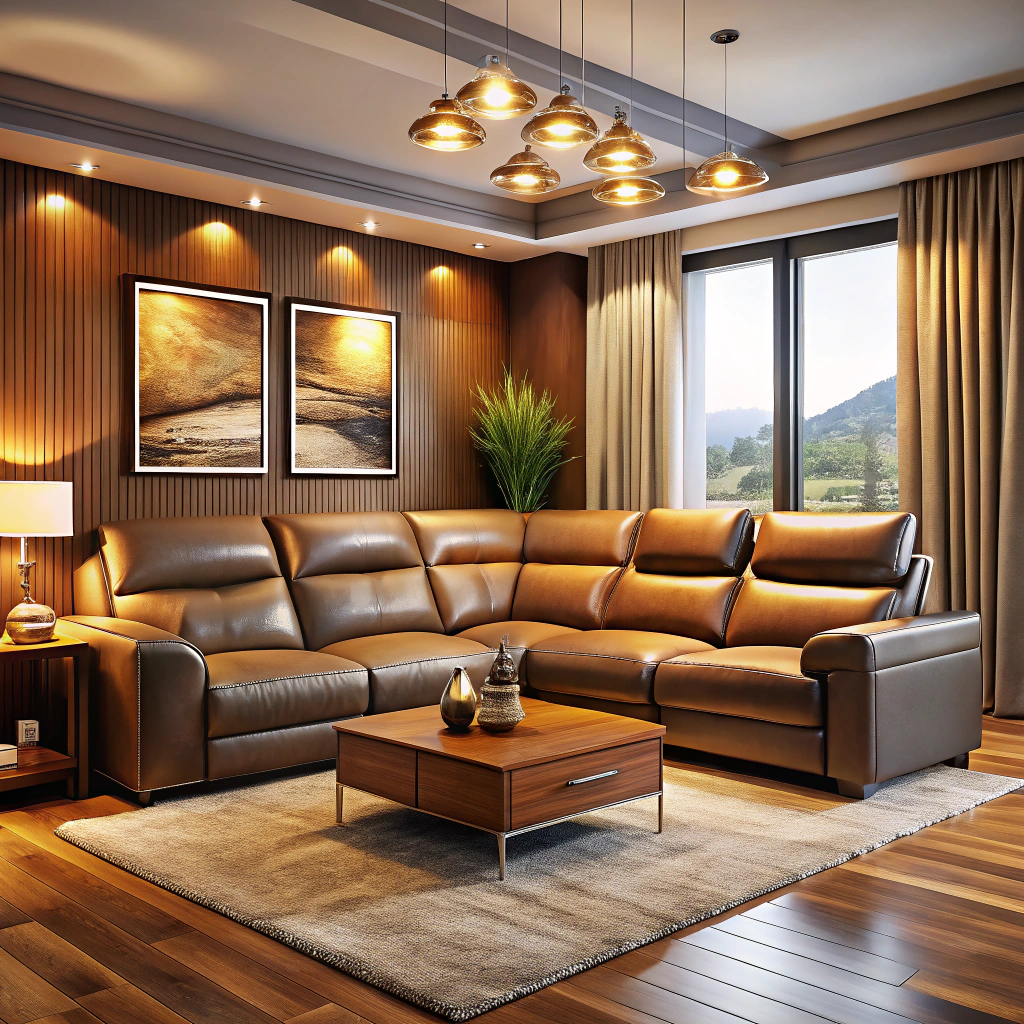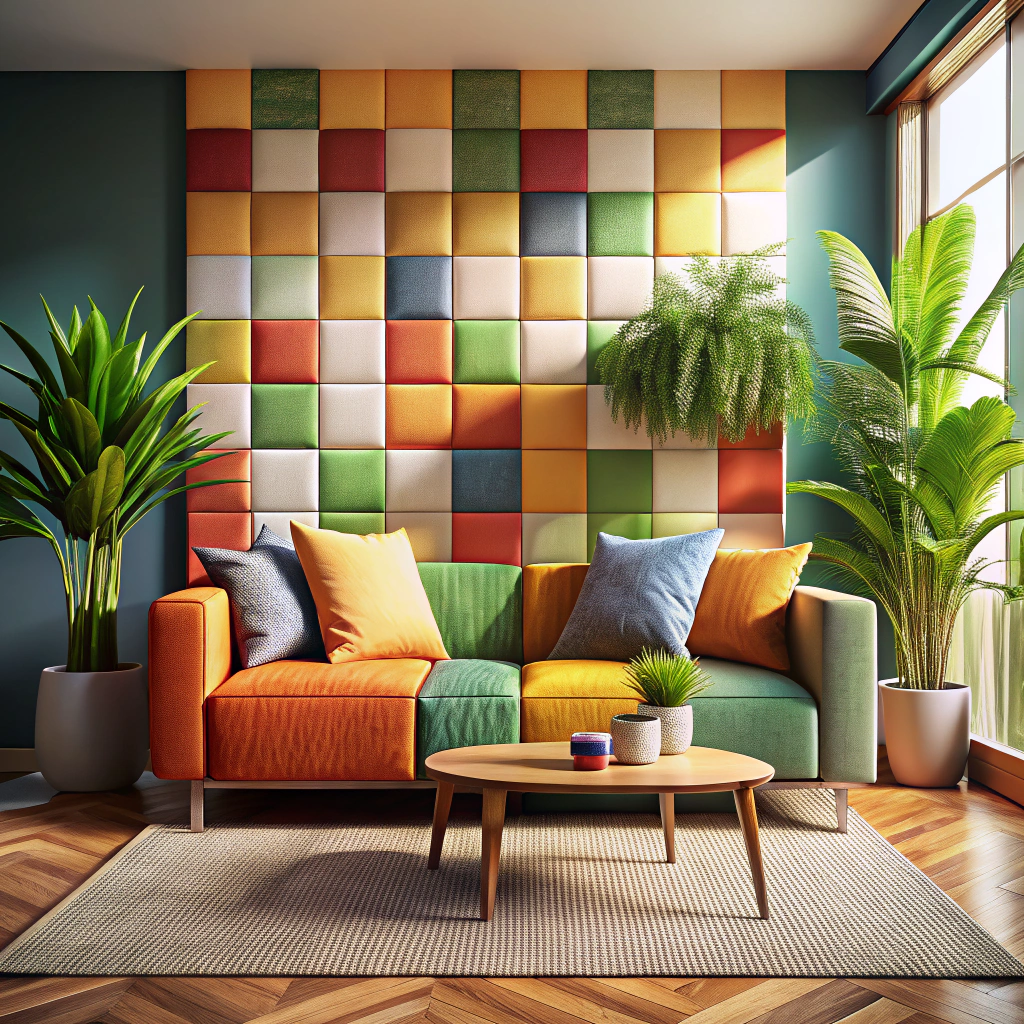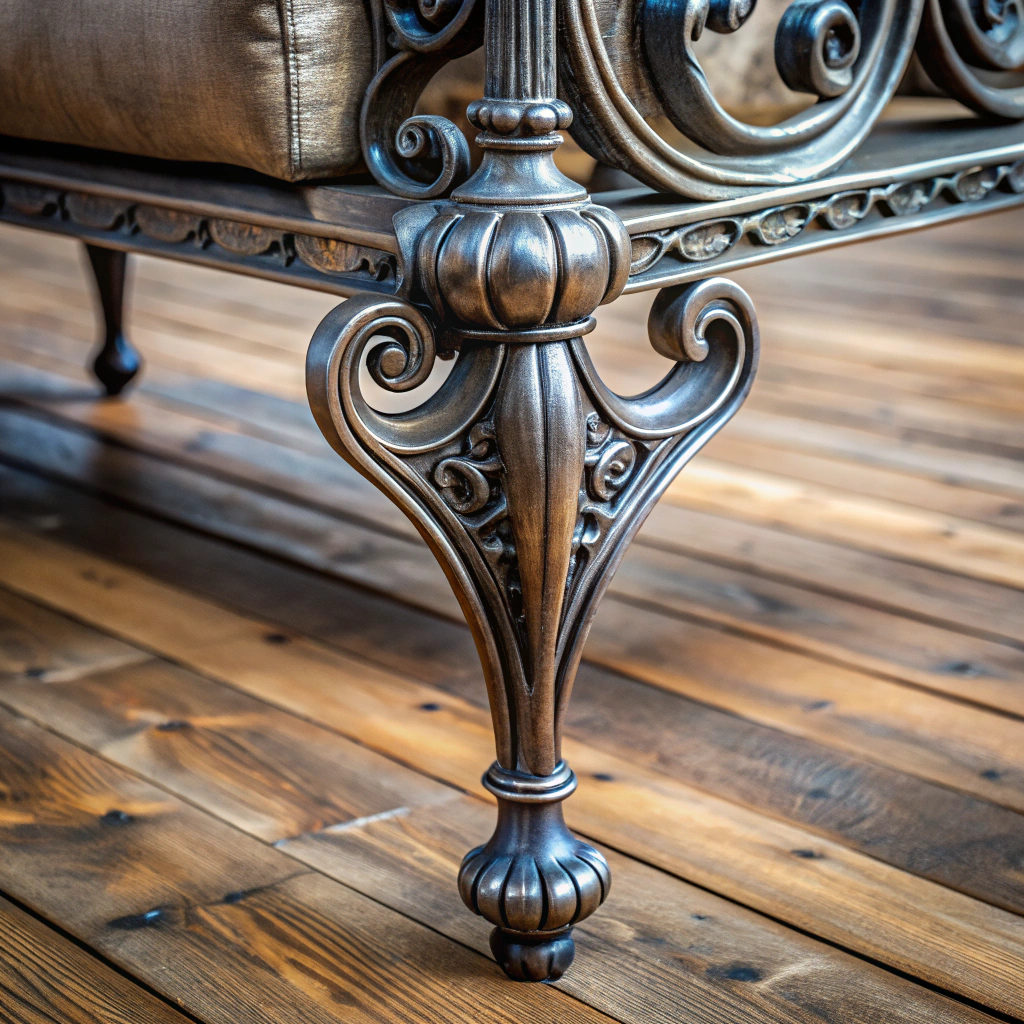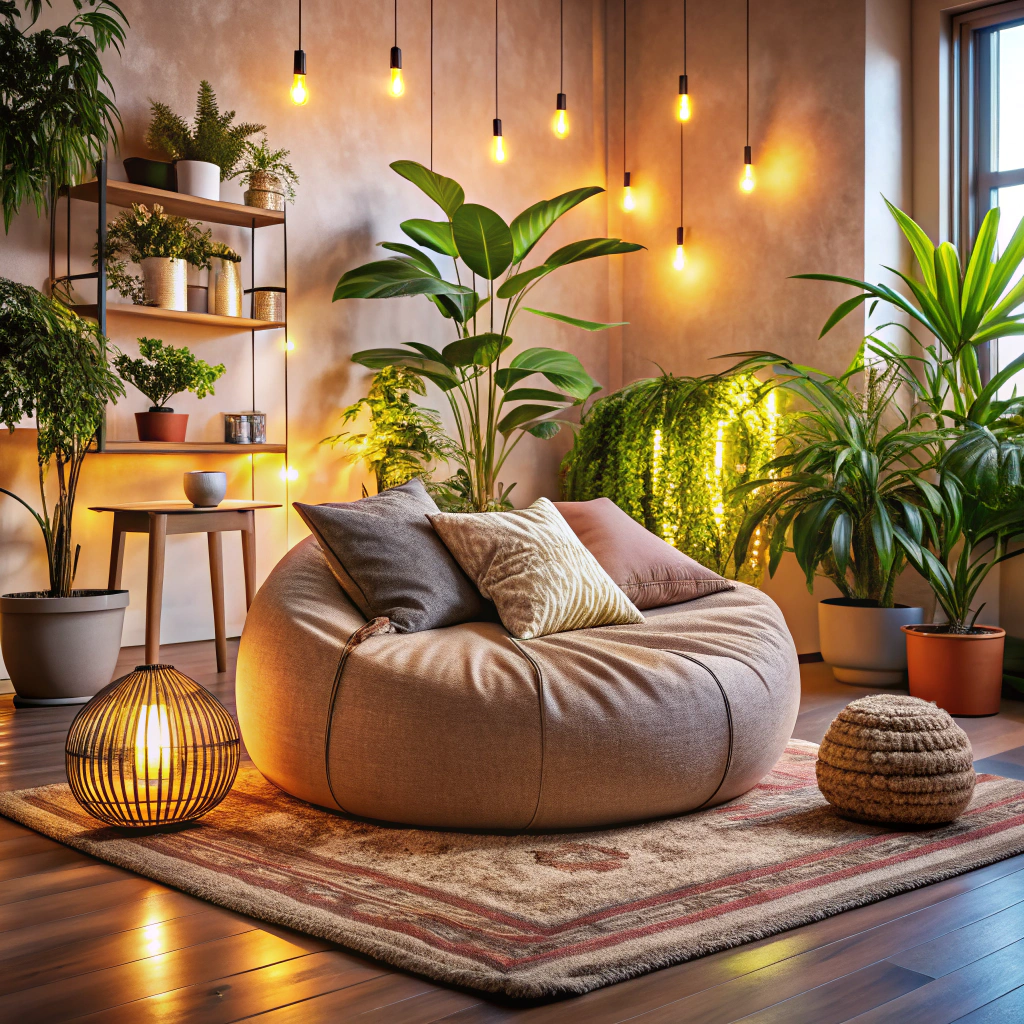Last updated on
Discover the perfect rug size for your sectional couch to enhance the aesthetic appeal and comfort of your living space.
When it comes to decorating your living room, choosing the right rug for your sectional couch can make all the difference. A rug not only adds warmth and texture to a space but also helps define seating areas and ties together different elements of a room.
However, selecting the perfect size can be a tricky task. Should you go for something big enough to cover the entire area or opt for a smaller one that sits just under your sectional? In this article, we’ll guide you through some essential tips to help you choose the right size rug for your sectional couch that will elevate your living space’s style and functionality.
Key takeaways:
- Choose a rug size that is proportional to your sectional couch and room size.
- Measure your sectional couch accurately to determine the right rug size.
- For L-shaped sectionals, consider using two smaller rugs or one larger rug.
- For U-shaped sectionals, opt for a large rug that covers the entire seating area.
- Avoid choosing a rug that is too small or placing furniture half on and half off the rug.
Table of Contents
Sectional Couch Dimensions
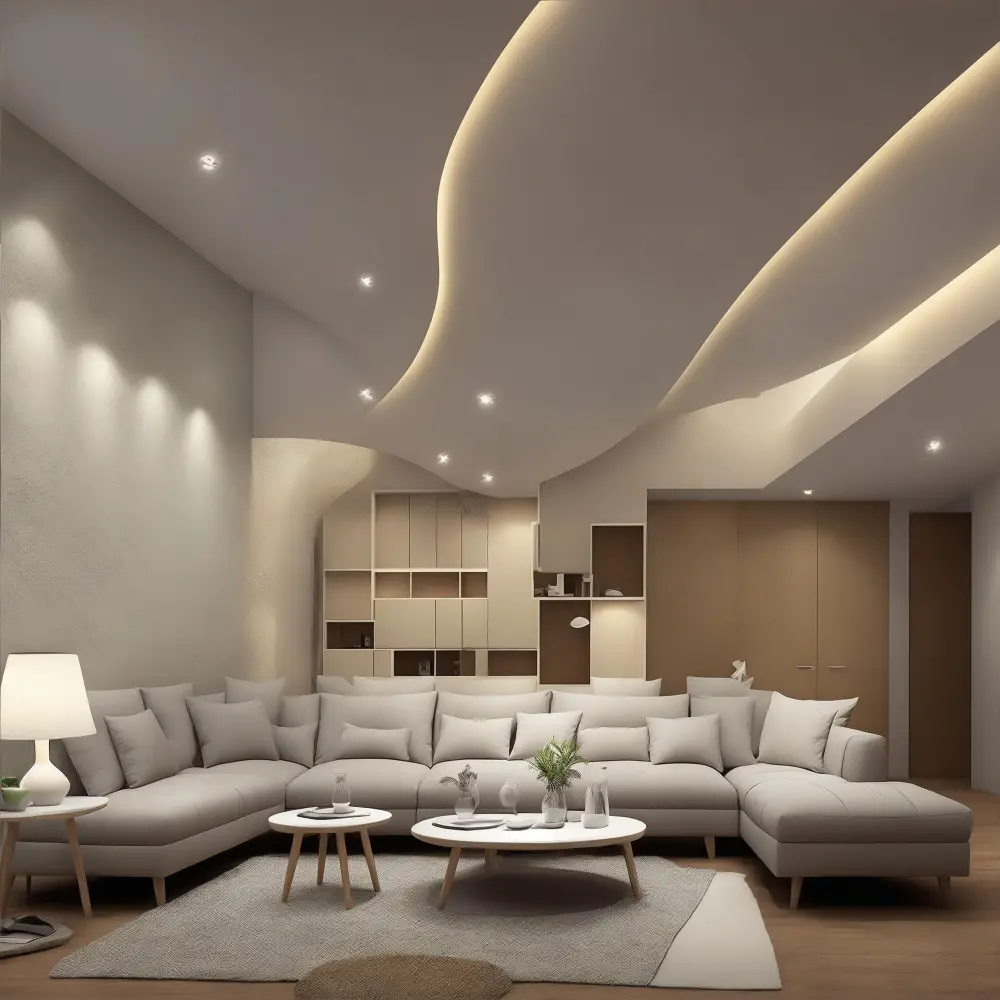
Sectional sofas come in various shapes and sizes, from L-shaped and U-shaped to curved or rounded corner designs. Knowing the exact measurements of your sofa will help you determine what size rug is best suited for it.
To measure your sectional couch accurately, use a tape measure to record its length along each side. For an L-shaped sofa, take measurements on both sides separately as they may differ slightly due to armrests or chaise lounges.
If you have a U-shaped sectional with multiple pieces joined together, make sure that all sections are included in the measurement.
Once you have recorded these dimensions accurately, consider how much floor space around the sofa should be covered by a rug based on traffic patterns and furniture placement within the room layout.
Determining Rug Size for L-shaped Sectional Sofas

Determining the right rug size for an L-shaped sectional can be challenging. One approach is to consider each section of the sofa separately.
For example, if you have a large L-shaped sectional with one side measuring 10 feet and the other side measuring 8 feet, you could opt for two separate rugs that measure approximately 6×9 feet each. This will help define each section of your sofa while also creating visual interest in your living space.
Alternatively, you could choose one larger rug that covers both sections of your L-shaped couch entirely. In this case, it’s essential to ensure that there is enough space around the edges of the rug so that it doesn’t look cramped or overcrowded.
When choosing a rug size for an L-shaped sectional sofa, keep in mind how much floor space you want to cover and whether or not you want all sections covered by one large area rug or multiple smaller ones.
Rug Size for U-shaped Sectional Sofas
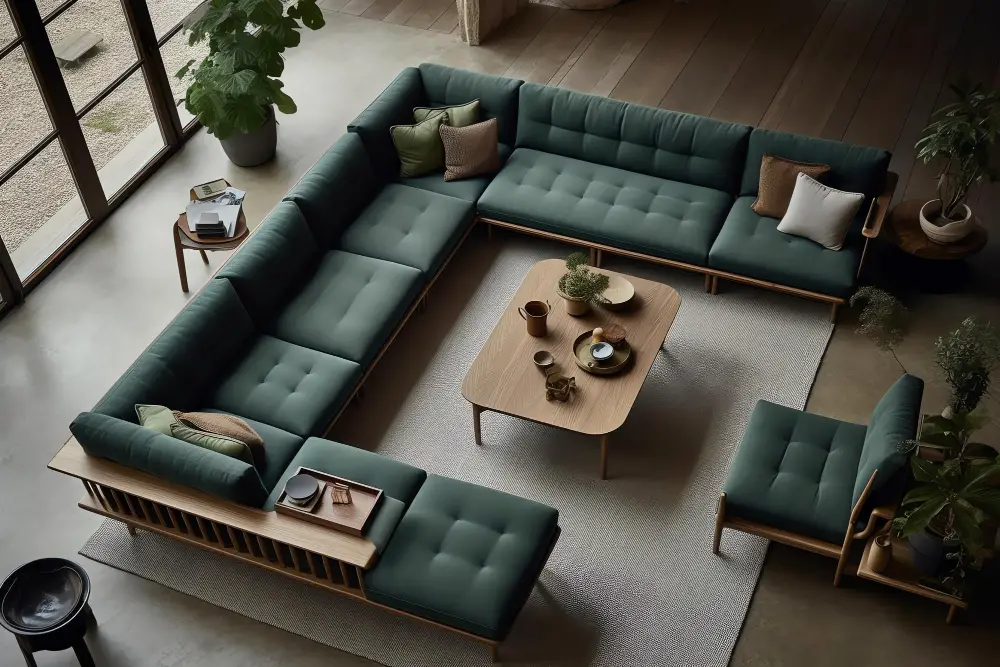
The ideal rug for this type of couch should be large enough to cover the entire seating area and extend beyond it slightly. This will create a cohesive look and make your living space feel more inviting.
When selecting a rug for your U-shaped sectional, consider the dimensions of each section carefully. Measure from one end of the sofa to another, including any chaise or ottoman extensions if applicable.
Then add an extra 12-18 inches on all sides so that there is ample room around each piece.
Another factor to keep in mind when choosing a rug size for your U-shaped sectional is traffic flow patterns in your living room. If you have other furniture pieces like coffee tables or accent chairs placed near the couch, ensure they fit comfortably within their designated areas without overlapping onto the carpeted surface.
Correct Size Rug for Small Sectionals
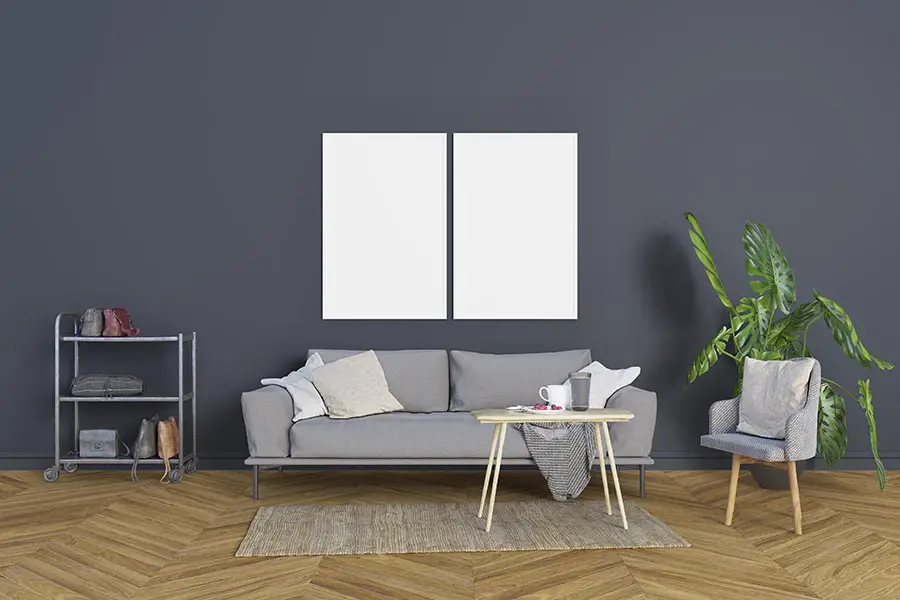
A common mistake people make when selecting a rug for their small sectionals is going too big. An oversized rug can swallow up the room and make it feel cramped and cluttered.
To determine the correct size of your area rug, measure the length and width of your sectional couch’s shorter side. Then choose a rug that extends at least 6 inches beyond each end of this measurement on both sides.
For example, if you have an L-shaped sectional with one armrest measuring 5 feet long by 3 feet wide, look for an area rug that measures at least 7 feet long by 5 feet wide or slightly larger than these dimensions.
A smaller-sized accent or runner rugs can also work well in front of each seating piece to add texture without overpowering space.
Ideal Rug Size for Rounded Corner Sectionals
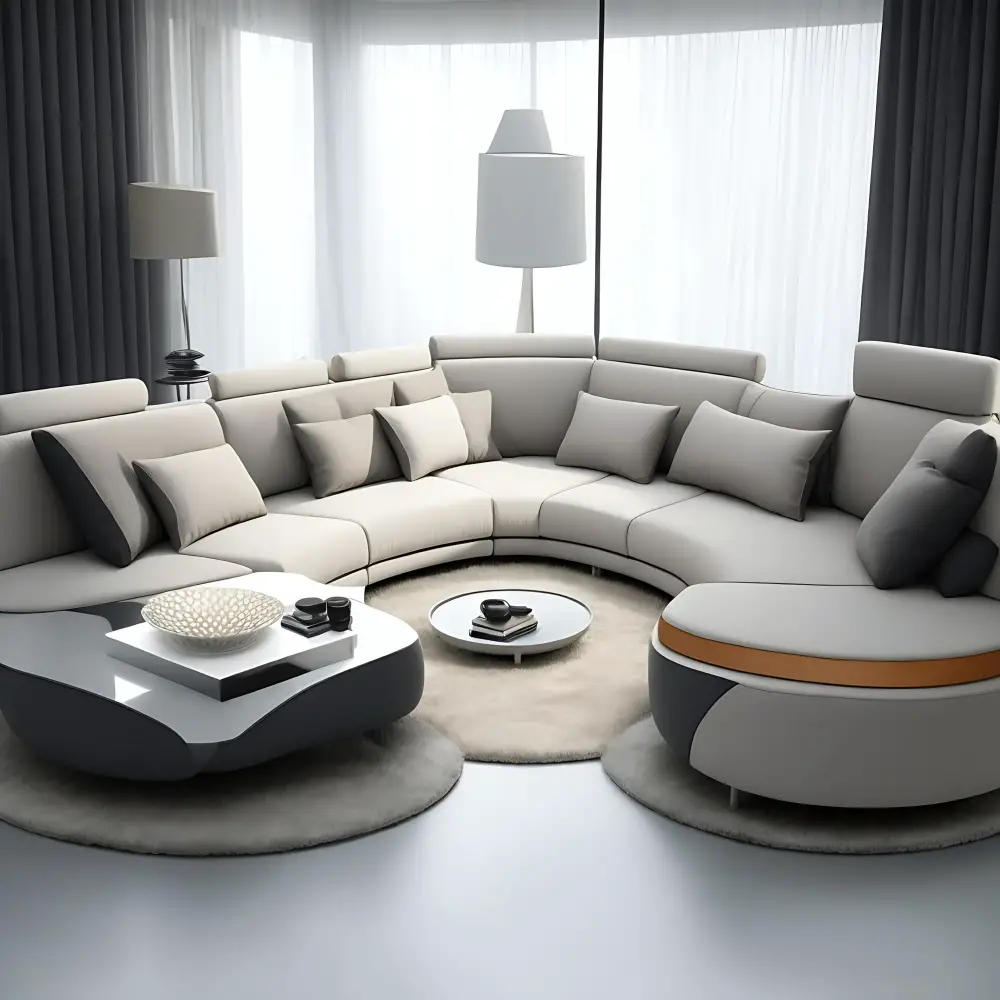
The curved shape of these sectionals makes it difficult to find a rug that fits perfectly without leaving any gaps or awkward spaces. However, there are some tips and tricks you can use to determine the ideal rug size for your rounded corner sectional.
One option is to choose an oval-shaped or round area rug that complements the curves of your sectional couch. This will create a cohesive look and make your living space feel more inviting.
Another approach is to opt for two smaller rectangular rugs instead of one large one. Place each carpet on either side of the curved end, ensuring they overlap slightly in front so as not to leave any exposed floor space between them.
Room Size and Layout

A small living room with a large sectional may require a smaller rug that sits just under the front legs of the sofa, while a larger space can accommodate an oversized area rug that covers most of the floor. You’ll want to think about how your furniture is arranged in relation to each other and how traffic flows through your space.
If you have an open-concept living area where multiple seating areas overlap or blend together, consider using different rugs in each section or opting for one large rug that ties everything together visually. Ultimately, finding balance between functionality and aesthetics will help guide you towards selecting the perfect sized rug for your sectional couch based on room size and layout considerations.
Rug Shape Choices
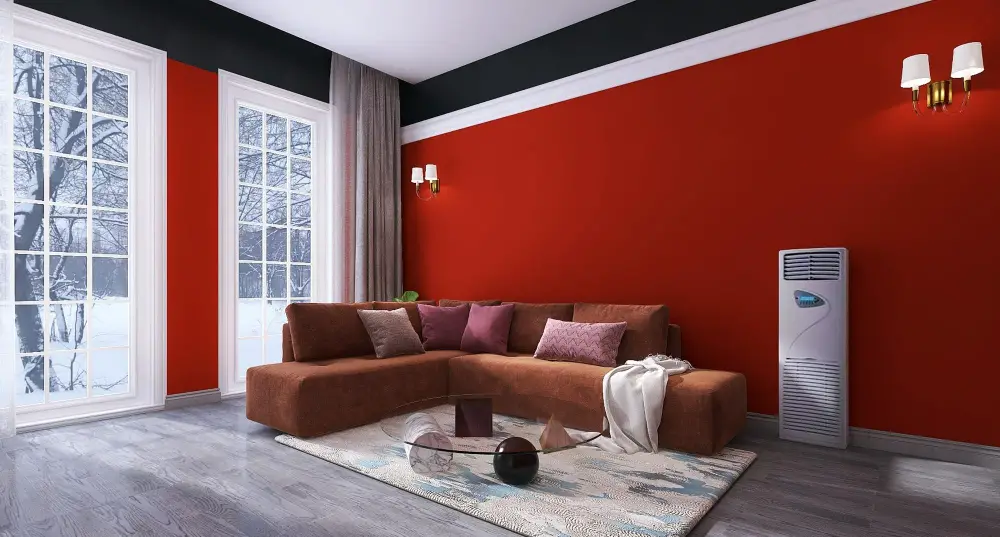
The most common shapes include rectangular, square, round and oval. Rectangular rugs are versatile and work well with most sectional couches as they can be placed in front or under the furniture piece.
Square rugs also work well with L-shaped sectionals but may not be suitable for U-shaped ones due to their size.
Round and oval shaped rugs add visual interest to a room by breaking up straight lines created by furniture pieces such as sectionals that have sharp corners. They’re ideal for rounded corner sectionals or when you want to create an intimate seating area within a larger space.
Ultimately, the shape of your rug will depend on personal preference and how it complements other elements in your living room decor scheme such as wall art or accent pillows on your sectional sofa.
Oversized Area Rugs for Large Sectionals
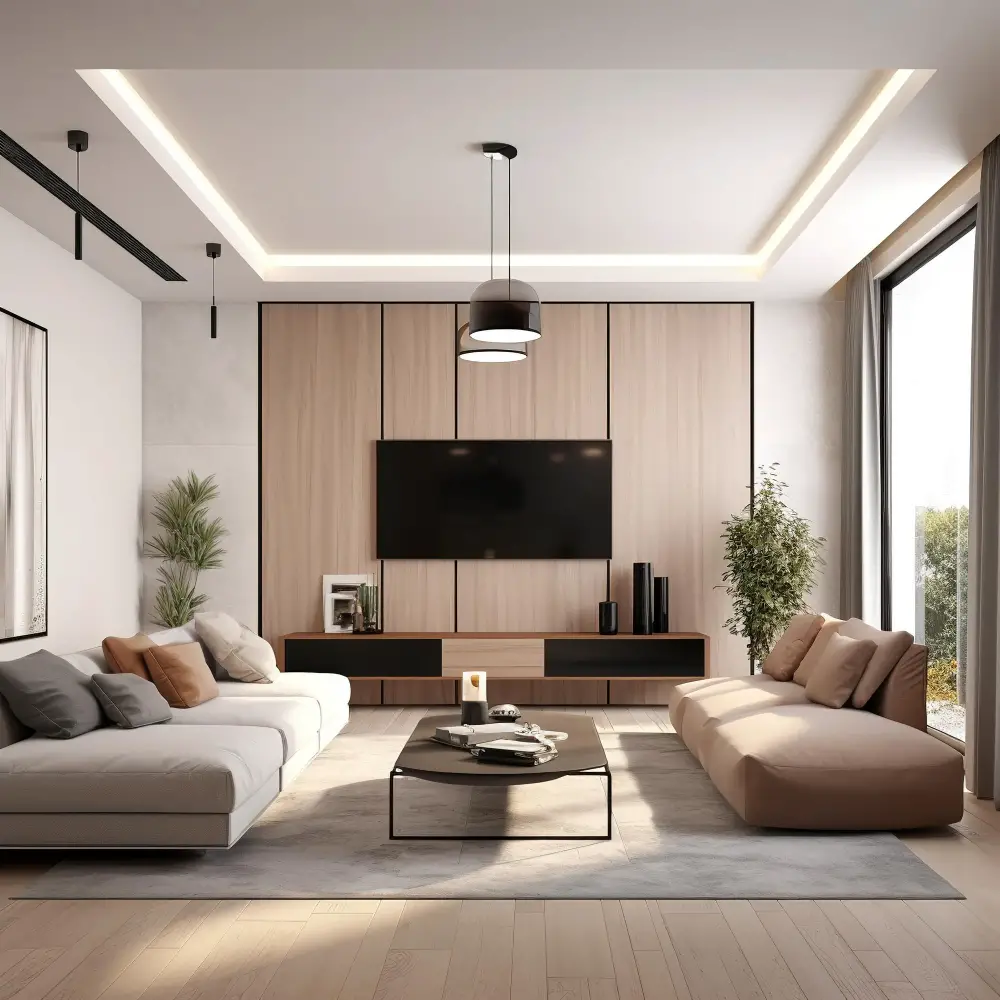
A larger rug will help anchor the space and provide ample cushioning underfoot. When choosing an oversized area rug for your large sectional couch, consider selecting one that is at least 9′ x 12′.
This size will allow all of the furniture legs to sit comfortably on top of it while still leaving enough space around the edges.
When it comes to style options for oversized rugs, there are plenty of choices available. You can opt for solid colors or patterns depending on your personal preference and existing decor elements in your living room.
If you want something bold yet timeless, consider investing in a Persian or Oriental-style rug with intricate designs that add visual interest without overwhelming other design elements.
Keep in mind that larger rugs tend to come with higher price tags than smaller ones due to their size and material quality. However, investing in an oversize area rug is worth considering as they offer long-lasting durability while adding warmth and comfort underfoot.
Rug Placement Tips for Sectional Couches
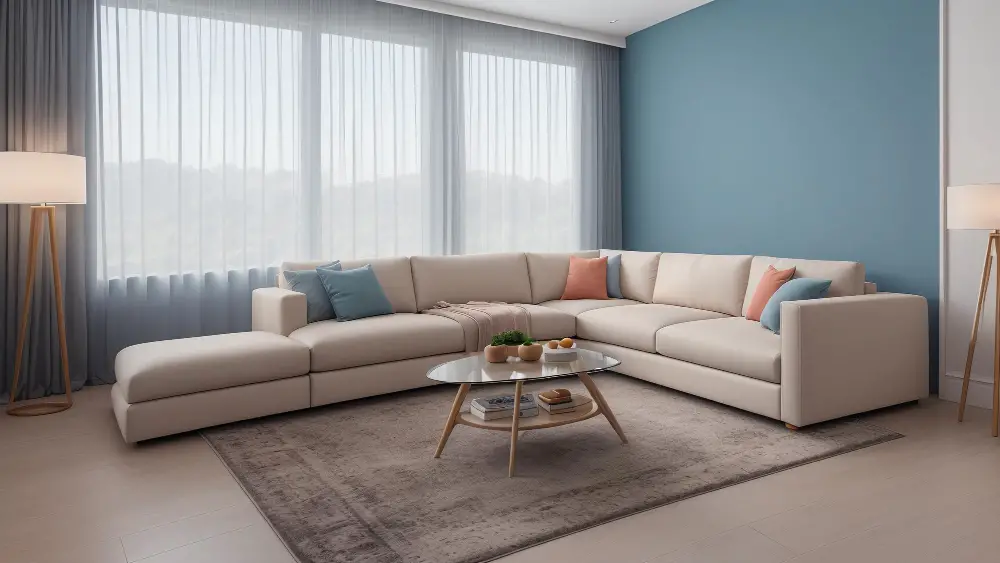
The way you position your rug can make a significant impact on the overall look and feel of your living space. Here are some tips to help you get started:
1. Centered Placement: If you want to create a focal point in your room, centering the rug under the coffee table is an excellent option.
2. All Legs On: For smaller sectionals or rooms with limited space, placing all legs of each piece of furniture on top of the rug can help create a cohesive look.
3. Front Legs Only: Alternatively, if you have larger sectionals or open floor plans that require more breathing room between pieces, consider placing only front legs on top of the area rug.
4. Layering Rugs: You may also choose to layer multiple rugs together for added texture and visual interest while still keeping them appropriately sized for each seating area.
5. Wall-to-Wall Carpeting: In cases where wall-to-wall carpeting already exists in a room but needs additional warmth and definition around furniture groupings like sectional sofas – using an appropriately sized accent carpet overtop will do wonders!
Visual Balance and Proportion

A well-proportioned rug can create harmony in the room, while an ill-fitting one can make it look awkward and unbalanced. To achieve visual balance, ensure that the rug is proportional to both the sectional sofa’s size and the room’s dimensions.
For instance, if you have a large L-shaped sectional sofa in a spacious living area with high ceilings, opt for an oversized area rug that extends beyond all sides of your furniture arrangement. This will help anchor your seating space while creating visual interest.
On the other hand, if you have a small U-shaped or rounded corner sectional couch in a cozy apartment living room with low ceilings or limited floor space, choose something smaller but still proportional to avoid overwhelming your space visually.
Remember also to consider how much of each piece of furniture should be on top of or off from underfoot on any given side as this affects how balanced everything looks together.
Rug Color and Pattern Options

The rug’s design can either complement or contrast with your furniture, walls, and decor elements. If you have a neutral-colored sectional sofa or a room with minimal decor accents, you may want to opt for a bold-patterned rug that adds visual interest and texture.
On the other hand, if your living space already has many patterns or colors in play, selecting a solid-colored area rug can help balance out the overall look.
Another crucial aspect of choosing an appropriate color scheme is considering how much foot traffic will be on the carpeted area regularly. For high-traffic areas like family rooms or entryways where dirt accumulation is more likely than others such as bedrooms; darker shades of rugs are recommended since they tend not to show stains easily compared to lighter ones.
In terms of patterns available in rugs today – geometric shapes such as stripes work well when paired with modern-style sectionals while floral designs add elegance when matched up against traditional pieces like leather sofas.
Rug Material Options
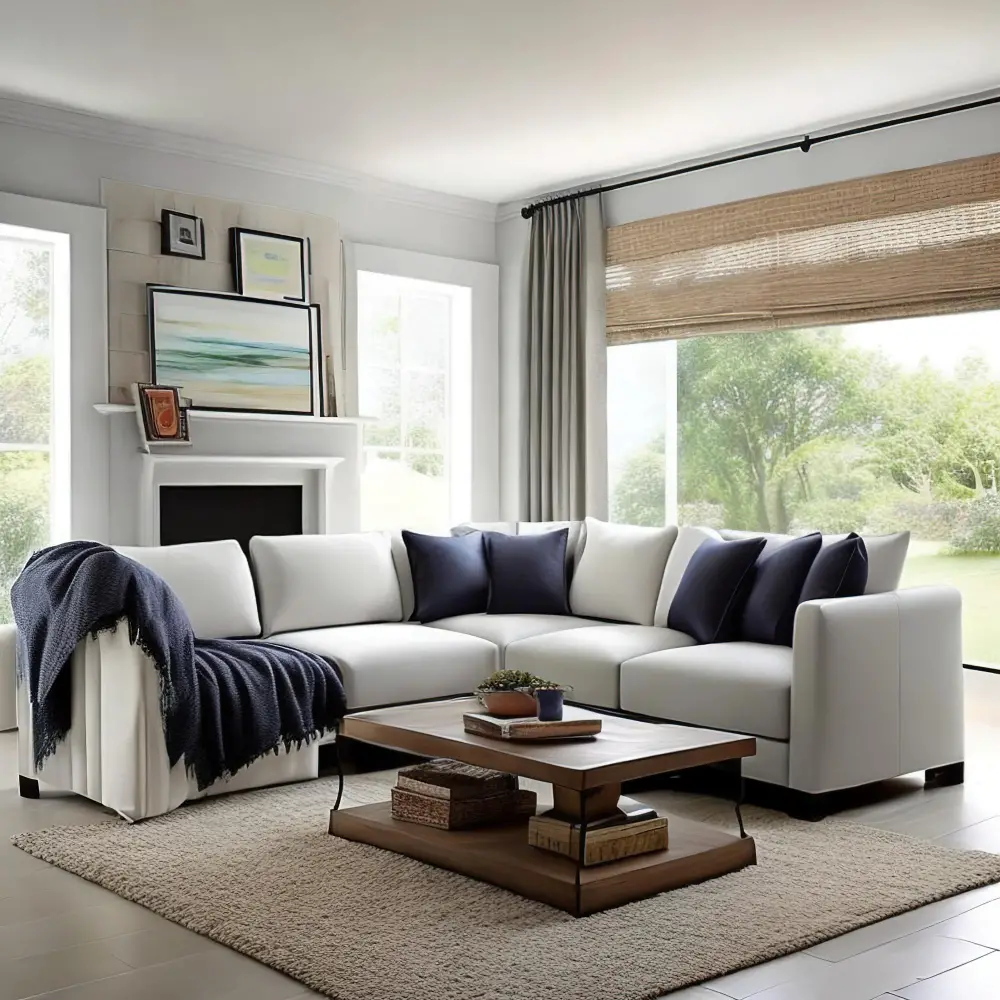
The most common materials used for rugs include wool, cotton, silk, jute or sisal. Wool is a popular choice due to its softness and durability; however it can be expensive compared to other materials.
Cotton is an affordable option that’s easy to clean but may not last as long as wool or synthetic fibers.
Silk rugs are luxurious with intricate designs but require special care and maintenance due to their delicate nature. Jute or sisal rugs offer natural textures that add warmth and depth while being eco-friendly; however they tend not be very soft underfoot.
Synthetic fibers such as nylon or polyester are also commonly used in rug manufacturing because of their affordability and stain-resistant properties which make them ideal for high-traffic areas like living rooms with sectionals where spills might occur frequently.
Traffic Patterns and Rug Wear
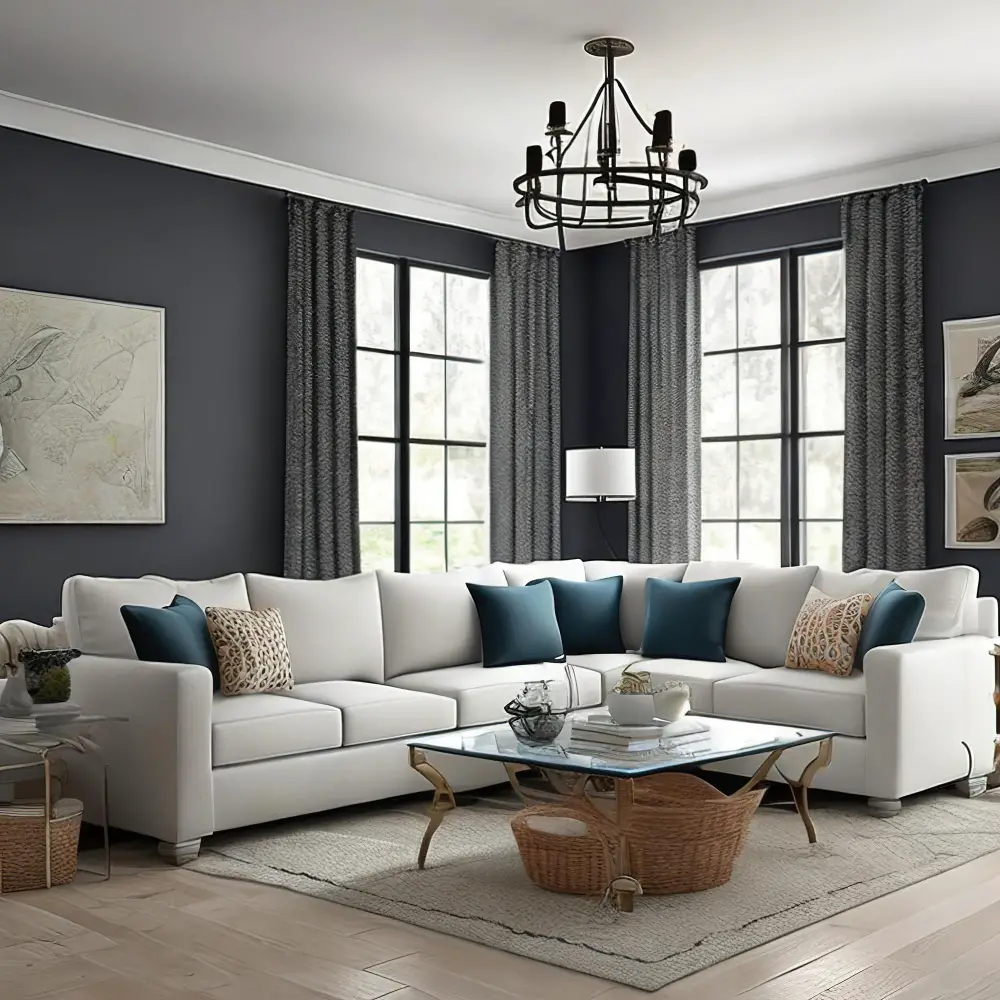
The placement of your furniture, including the sectional sofa, can affect how much foot traffic a particular area receives. High-traffic areas require durable rugs that can withstand constant use without showing signs of wear and tear quickly.
For instance, if you have kids or pets who love running around the house or frequently entertain guests in your living room, it’s best to choose a rug made from sturdy materials like wool or synthetic fibers such as nylon and polyester. These materials are known for their durability and resistance to stains.
Consider placing furniture legs on top of the rug rather than off it as this helps distribute weight evenly across its surface reducing uneven wear over time. If you’re unsure about which type of material would be best suited for high-traffic areas in your home consult with an expert at a reputable carpet store before making any purchases.
Budget Considerations

Rugs come in various materials, sizes, and styles that can significantly affect their price range. However, you don’t have to break the bank to find a quality rug that fits your sectional couch perfectly.
There are several ways you can save money without compromising on style or comfort.
One option is to look for sales and discounts at local stores or online retailers. Many stores offer seasonal sales where you can get great deals on rugs of all shapes and sizes.
Another way to save money is by opting for synthetic fibers instead of natural ones like wool or silk. Synthetic rugs are often more affordable than natural fiber options but still provide excellent durability and comfort.
You may also consider purchasing a smaller size rug if it fits within your budget constraints rather than going overboard with larger ones that might be too expensive.
Rug Care and Maintenance
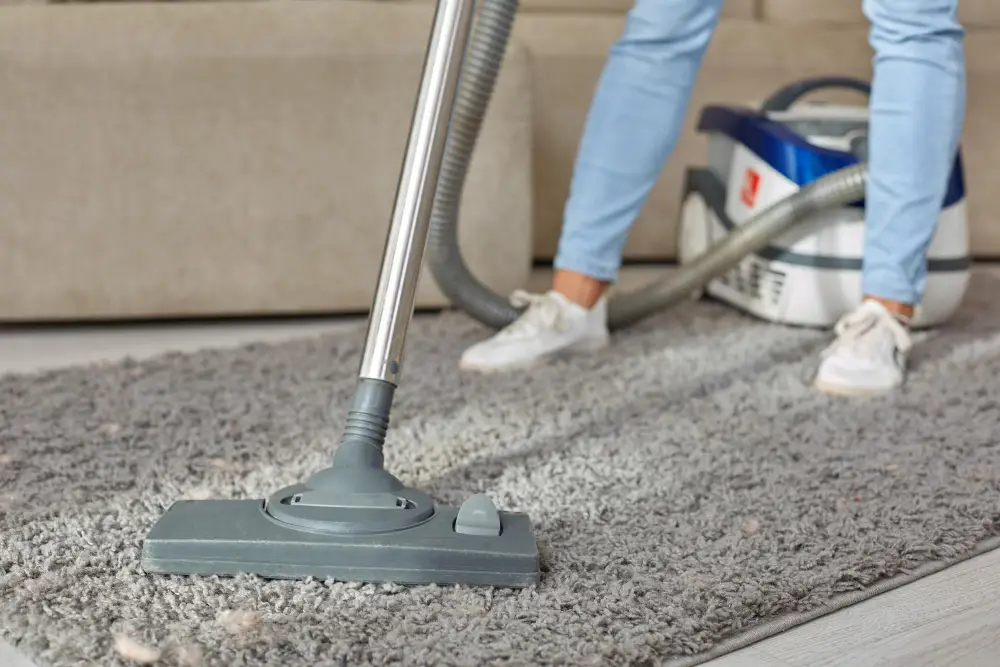
Regular maintenance and cleaning can help extend the life of your rug and keep it looking its best.
Vacuuming is one of the most crucial steps in maintaining a clean rug. It helps remove dirt, dust, and debris that can accumulate over time.
Be sure to vacuum both sides of the rug regularly using a low-power setting or handheld attachment.
In addition to regular vacuuming, spot cleaning spills as soon as they happen is also important in preventing stains from setting into your carpet fibers permanently. Use a mild detergent solution with warm water on fresh spills or stains before blotting them dry with a clean cloth.
For deeper cleaning needs like pet odors or heavy soiling, professional steam-cleaning services may be necessary every few years depending on usage frequency.
Popular Rug Styles for Sectionals
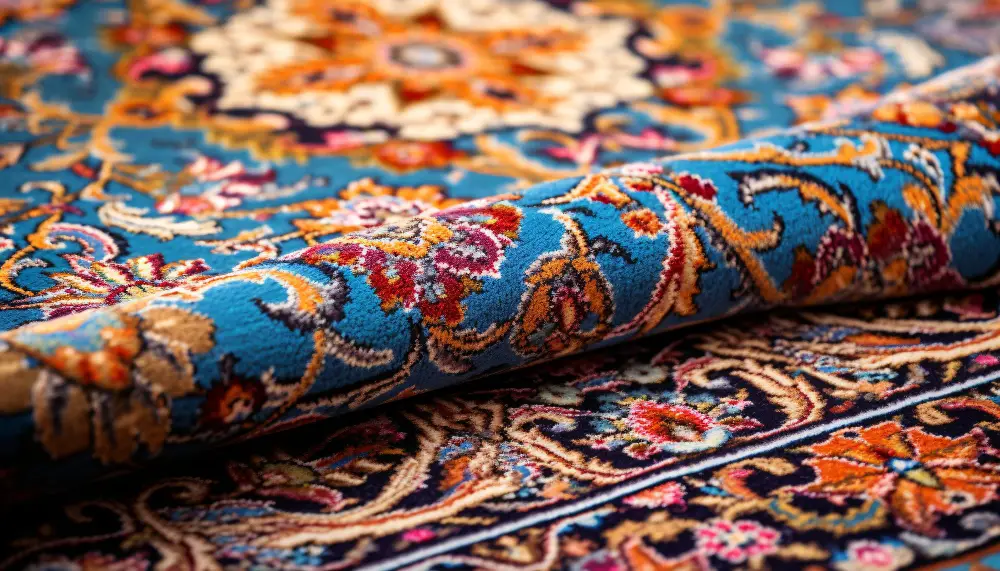
The right rug can complement the overall aesthetic of your living space and add an extra layer of comfort underfoot. Some popular styles include traditional Persian or Oriental rugs, modern geometric patterns, bohemian-inspired prints with bold colors and textures, or natural fiber rugs like jute or sisal that offer a more organic look.
If you have a neutral-colored sectional sofa in your living room, consider adding some visual interest with a patterned rug that incorporates complementary hues. Alternatively, if you have colorful upholstery on your sectional couch already – such as bright blue velvet – then opt for something more subdued like an ivory shaggy area rug to balance out the color scheme.
Custom Rug Solutions

Custom rugs can be tailored to your exact specifications in terms of size, shape, color and pattern. This option allows you to create a rug that perfectly complements your sectional couch while also reflecting your personal style and taste.
When considering custom rugs for sectionals, it’s essential to work with an experienced professional who can guide you through the process from start to finish. They will help determine the right materials based on traffic patterns in your living space and advise on appropriate colors and patterns that complement both the sectional sofa as well as other elements of decor within the room.
Custom-made area rugs are often more expensive than pre-made options but offer greater flexibility when it comes down to design choices.
Rug Padding Recommendations
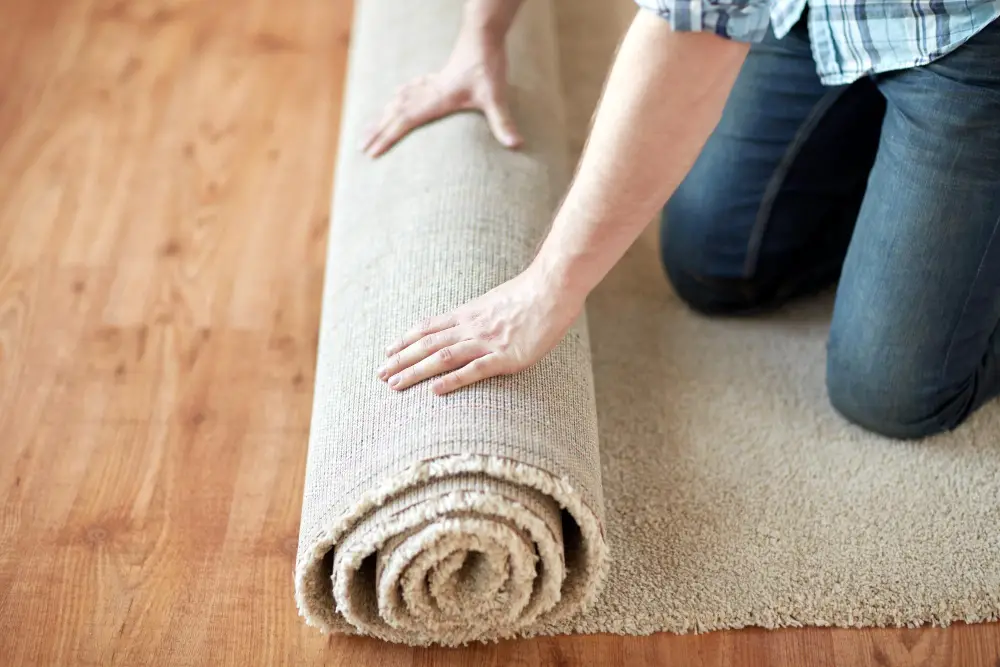
Rug pads are essential for protecting both your floor and rug from wear and tear. They also provide extra cushioning underfoot, making walking on the carpet more comfortable.
When selecting a pad for your sectional couch area rug, consider its thickness, material quality, durability as well as how it will affect the overall look of your space. A good rule of thumb is to choose a pad that is slightly smaller than the actual size of your carpet so that it doesn’t show around its edges.
There are different types of padding materials available in various densities such as foam rubber or felted wool which offer excellent grip without damaging hardwood floors or leaving residue behind when removed. Some pads come with additional features like moisture resistance or antimicrobial properties which can be beneficial if you live in humid areas prone to mold growth.
Mistakes to Avoid With Rug Size
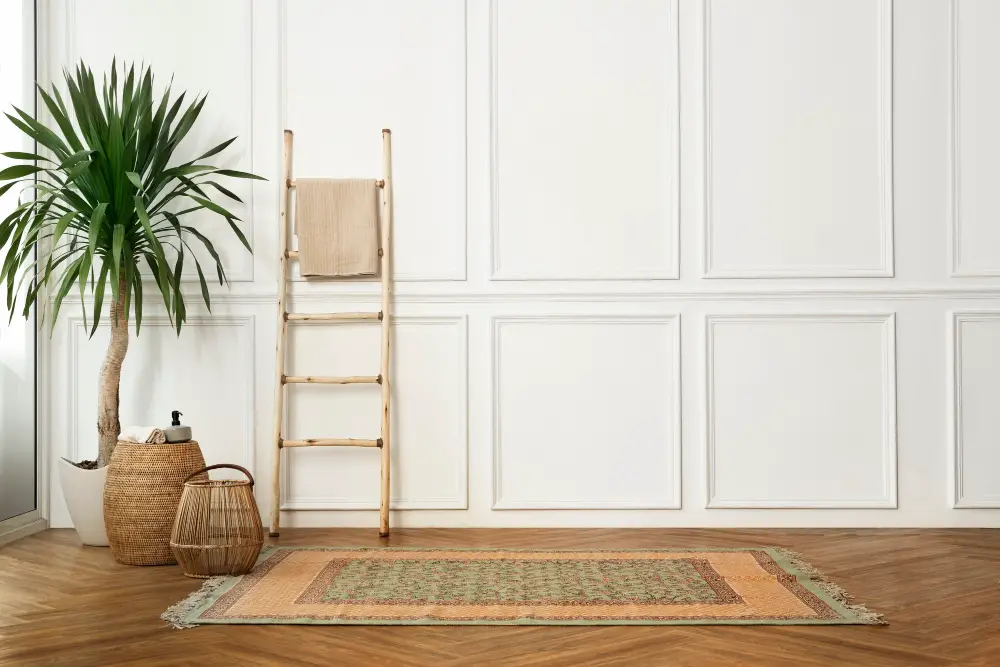
One of the most significant errors is selecting a rug that’s too small for your space. A tiny carpet can make a room feel disjointed and unbalanced, leaving it looking incomplete.
Another mistake is placing furniture half on and half off the carpet. This approach not only looks awkward but also makes it challenging to move chairs in and out from under tables or desks.
Lastly, don’t forget about traffic patterns when deciding on a rug size. If you have high-traffic areas in your living room, such as doorways or hallways leading into other rooms, consider leaving those spaces bare or using smaller rugs instead of one large area rug.
By avoiding these common mistakes when selecting a rug size for your sectional couches will help ensure that you create an inviting space that feels cohesive and balanced while providing comfort underfoot.
FAQ
What shape rug goes with a sectional?
Any shape rug, such as rectangular, square, circular, or oval, can work well with a sectional, as long as it is placed in the middle of the space in front of the couch and aligned or centered appropriately.
How should a rug be placed with sectional?
Place the rug at an angle under the sectional, with one short end under the middle portion and the other end pointing towards the connected room or space, directing the eye and traffic pattern for a cohesive flow between adjoining spaces.
How big should your rug be compared to your couch?
A suitable rug size ranges from 8×10 feet to 9×12 feet, and it should be at least six to eight inches wider than your sofa on all sides.
What is the rule for a rug under a sofa?
The rule for a rug under a sofa is to choose a rug large enough that allows for at least 3 inches behind the front legs of the furniture, ensuring all furniture legs sit on the rug without squeezing the furniture too close together.
How can you choose the right rug material to complement your sectional couch?
To choose the right rug material to complement your sectional couch, consider the couch’s fabric, room usage, and style for a harmonious blend.
Are there specific rug styles or patterns that work best with a sectional couch?
Specific rug styles or patterns that work best with a sectional couch include those with geometric shapes, abstract designs, or large-scale patterns for a harmonious look.
What are the ideal rug placement options for L-shaped and U-shaped sectionals?
Ideal rug placement options for L-shaped and U-shaped sectionals include placing the rug either partially or fully beneath the sectional or surrounding it, ensuring the edges of the rug extend beyond the edges of the furniture.
